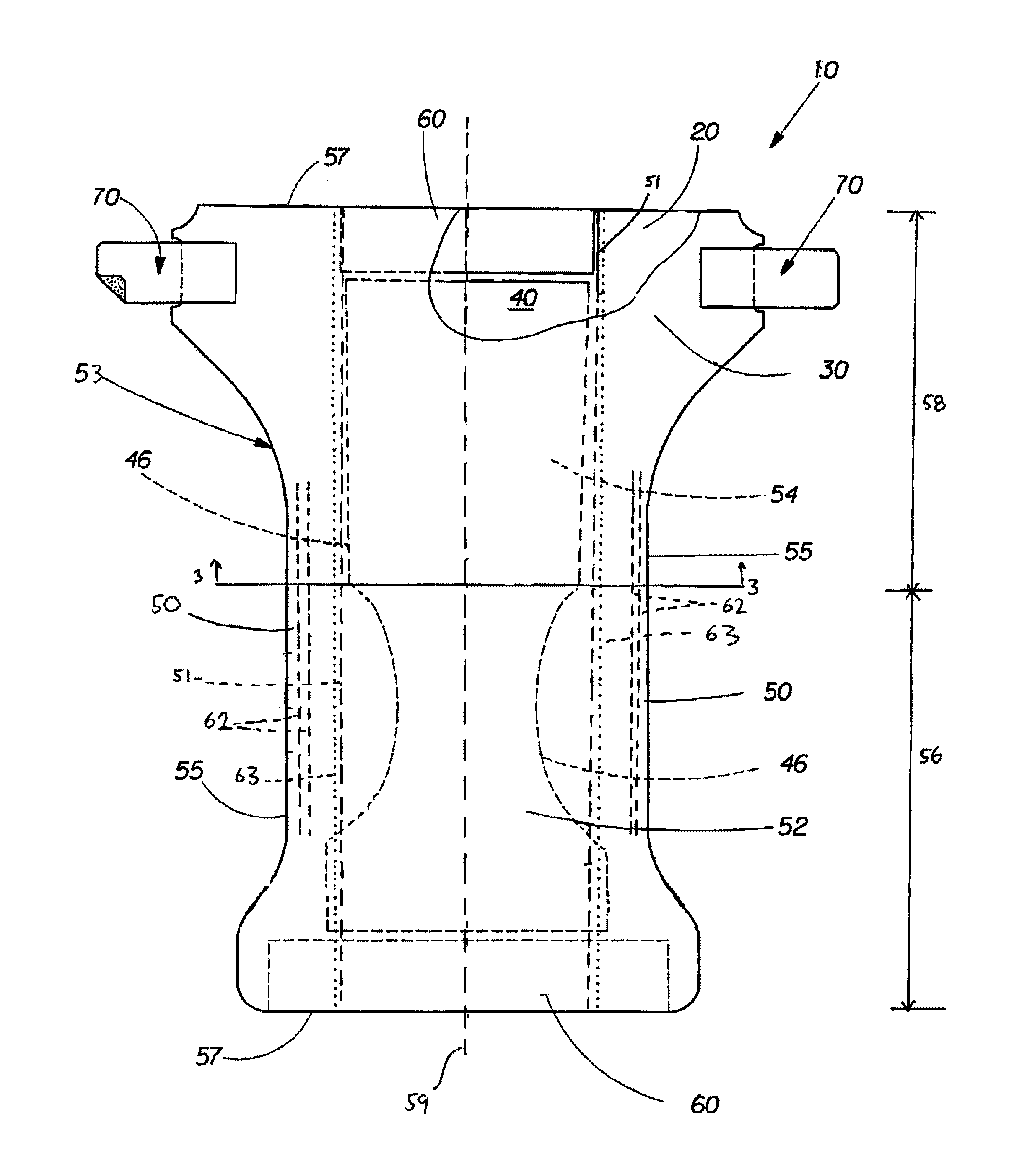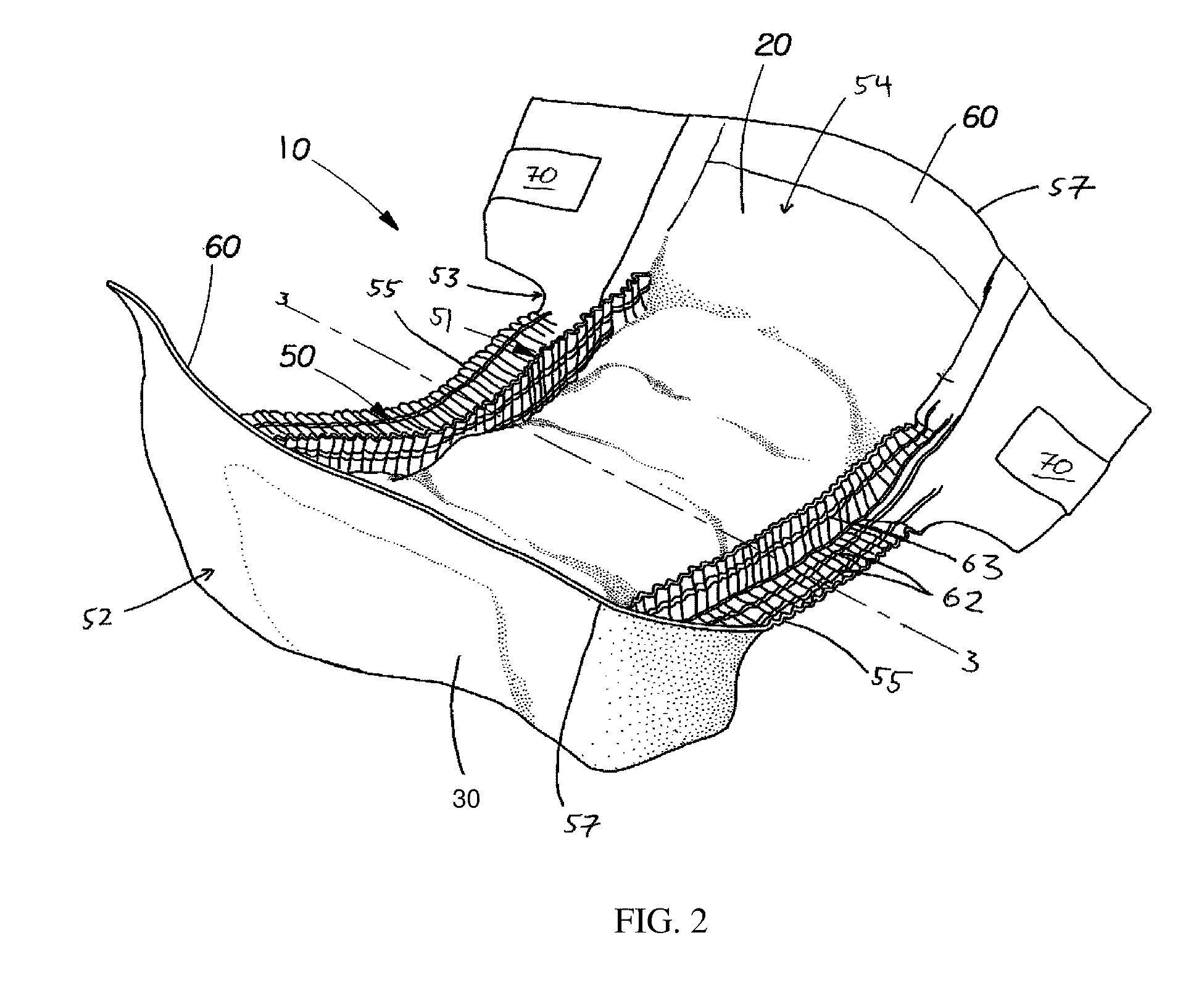Hydrophobic Surface Coated Material for use in Absorbent Articles
a technology of surface coating and absorbent articles, applied in the field of hydrophobic surface coating materials and absorbent articles, can solve the problems of body exudates escaping the boundaries of absorbent articles, fecal matter spreading over the liquid receiving member, occlude the skin of wearers,
- Summary
- Abstract
- Description
- Claims
- Application Information
AI Technical Summary
Problems solved by technology
Method used
Image
Examples
example 1
[0082]A multicomponent, silicone, non-aqueous and solventless HSC composition is prepared by mixing a vinyl terminated polydimethyl siloxane, methylhydrogen polydimethyl siloxane and cross-linker and catalyst. The mixture is mixed in a ratio of 92% SylOFF 9110 brand silicone polymer, 5% SylOFF 7682 brand cross-linker and 3% SylOFF 4000 brand catalyst. 400 μg / g of the HSC is deposited on the substrate. Suitable substrates for use in this example include the lightweight nonwoven laminates having a spunbond / meltblown / spunbond laydown in gsm of 6 / 1 / 6, 7 / 1 / 7, and 8 / 1 / 8. The HSC also contains a transition metal catalyst to facilitate the self-cross-linking of the PDMS polymers. The coated substrate is thermally cured at a temperature range of from 80° C. to 120° C. for 0.5-1.0 minute and then stored in a suitable container for later use. After the thermal curing process, the cross-linker is substantially removed from the HSC.
PUM
| Property | Measurement | Unit |
|---|---|---|
| Contact Angle | aaaaa | aaaaa |
| contact angles | aaaaa | aaaaa |
| contact angles | aaaaa | aaaaa |
Abstract
Description
Claims
Application Information
 Login to View More
Login to View More - R&D
- Intellectual Property
- Life Sciences
- Materials
- Tech Scout
- Unparalleled Data Quality
- Higher Quality Content
- 60% Fewer Hallucinations
Browse by: Latest US Patents, China's latest patents, Technical Efficacy Thesaurus, Application Domain, Technology Topic, Popular Technical Reports.
© 2025 PatSnap. All rights reserved.Legal|Privacy policy|Modern Slavery Act Transparency Statement|Sitemap|About US| Contact US: help@patsnap.com



